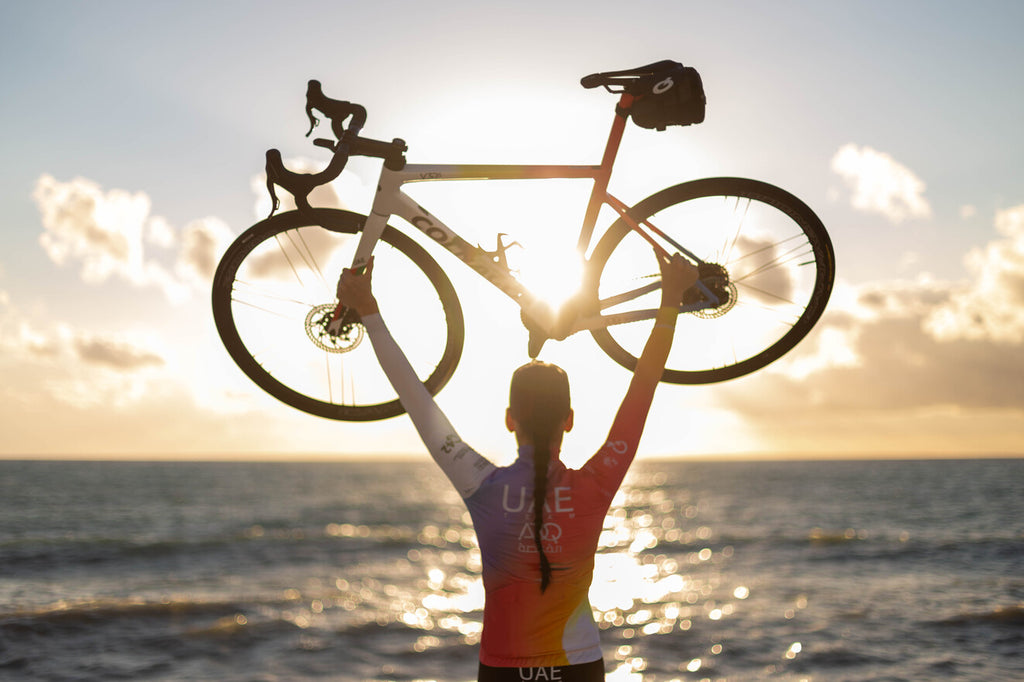There are few sports that are as gruelling as cycling. And there are few sports that are as physically demanding for women as cycling. That's why it's so impressive that there is a thriving and competitive professional women's cycling circuit.
The world's best female cyclists can be found in the peloton, competing in races all over the world. Some of the most prestigious races on the women's calendar include the Giro Rosa, the La Course by Le Tour de France and the Ladies Tour of Holland.

But how do those who experience women's professional cycling on a daily basis live and tell us about these differences? We asked two world-class champions:
- Pauline Ferrand Prevot, current European XC champion and able to wear the rainbow jerseys on road, cross country and cycle cross at the same time.
- Martina Fidanza, multiple track world champion and road professional for the Ceratizit - WNT team.
The differences between women's and men's cycling.
Men and women are certainly different from a physical point of view, so the way they race must be different, but not necessarily less spectacular, on the contrary! The main difference is in the kilometres, which are shorter for women, but which immediately give rise to battles and sprints for position, as opposed to the breakaways and dead periods of the much longer men's races. This is true in all disciplines, from road to MTB to track.

Unfortunately, despite this, the media, and consequently also sponsors and brands, give even less importance to women's cycling, leading to a lower image and economic return. This situation is slowly changing, clashing with 'old habits'. Let's think that men's racing started around 1921, while women were allowed to compete without restrictions from the 1950s onwards.
How are these differences experienced?
Both Martina and Pauline perceived this difference, but did not see it as an obstacle, but as a further boost to their motivation. This is the true mindset of the champion, who knows how to turn an obstacle into something challenging:
I see that the situation is changing, we had our difficulties, but we are taking back our spaces and what we deserve. (Martina)
There are differences between men and women, they must be recognised and consequences must be acted upon. We don't have to be the same as men, but live women's cycling as it is. (Pauline)
These asymmetries are especially noticeable in the road world, but less so in MTB and track. This is for several reasons: road cycling is an older discipline that carries with it a historical legacy of its time and therefore has more difficulty in losing the gender difference. Track and MTB are smaller communities, where differences are more levelled out.
What do you expect for the future?
The future of women's cycling is bright, with the number of women cycling increasing every year. The number of women cycling has increased by more than 50%. However, despite this growth, there remains a significant gender gap between men and women in terms of participation levels. This gap has been attributed to a number of factors, including a male-dominated culture within cycling that can discourage girls from taking up the sport; a lack of role models for young girls who want to take up cycling as an activity; a lack of knowledge among parents of sports such as cycling that do not involve playing with bicycles; inadequate provision for children starting at school or kindergarten; poorly designed facilities for children who want to cycle for recreational purposes (e.g. poor quality bicycle racks); and/or not enough opportunities for girls to compete against boys in local events or national competitions.

The message, however, is one of hope. We are ready to finally recognise the space and fame that women athletes deserve. The introduction of the women's Paris Rubaix, classics like Strade Bianche Women Elite and other competitions is showing this.
We look forward to cycling, both amateur and professional, finally being free of all barriers and glass ceilings, allowing everyone to enjoy the joy of cycling to the fullest.


